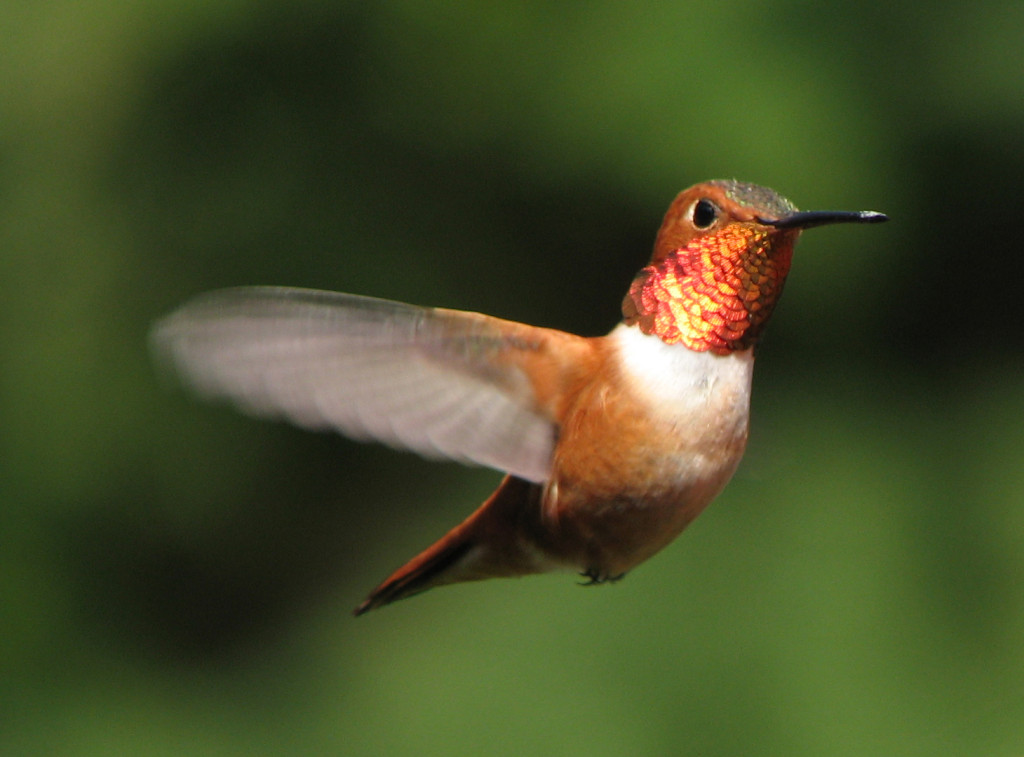As I was cleaning around the house this morning, I spied a small hummingbird in front of the window, wings beating furiously as it hovered in the air. I couldn’t help but think of how busy it must be in these final days of summer as it readies for its big voyage ahead in the next month. You see, Colorado is just a temporary summer haven for the hummingbirds before heading back to its more permanent home in Mexico. Try though we may to keep them around by hanging feeders filled with sugary water, they will begin to make their long journey south in the coming month and be gone by October. But before they can do that, they will spend a lot of time getting ready for their big trip.
Unlike Canada geese which fly in formation, hummingbirds fly solo as they migrate to Mexico. That means they will burn up a lot more energy, as they battle the winds and weather. But by flying alone, they are so tiny, they are almost invisible to predators. To assist with this, they will fly during the days and rest at night, staying close to the water and the treetops to minimize the wind resistance, flying up to 25 miles per hour. Just imagine, how many times their tiny wings must beat while making this incredible trip. Despite their best efforts to conserve energy, at one point, they will have to fly up to 20 hours straight as they cross over the Gulf of Mexico. Scientists estimate hummingbirds can fly up to 600 miles without having to refuel — amazing!!
So during these late summer and early fall days, they like other animals, will go on a feeding frenzy. Hummingbirds will gain 40% of their weight, to add to their fat reserves for the very energy consuming journey they have ahead. Hummingbirds prefer the nectar of trumpet-shaped flowers, which make it easy to use their slender beaks to extract nectar from. They are also very attracted to red flowers, but will feed on pink and purple flower nectar as well. In addition to nectar, these tiny creatures will also eat insects to augment their diet as well. Two of the common hummingbirds many people see along the Rocky Mountains are the Broad-tailed hummingbird and the Rufous hummingbird. The Rufous hummingbird makes one of the longest migrations of any bird, flying from as far north as Alaska all the way south to Guadelajara, Mexico.
It’s hard to not want to help hummingbirds this time of year, when hearing about the arduous migration they will undertake. Hanging hummingbird feeders is a very popular hobby for people residing along the Front Range. However, I personally don’t engage in providing feeders, because while they provide valuable food for the hummers, they are also a great attractant to another animal who is fattening up for the winter — black bears. And black bears are also attracted to human food as well as feeders. Many people in our neighborhood near Nederland have had bear problems around their property who attracted them because of hummingbird feeders they have hung. Sorry hummingbirds, you will have to find that food through natural means up here in Nederland.
The wonder of nature so often touches and inspires me. As I gaze upon the tiny birds floating outside my window, I reflect on their perseverance and strength they draw upon as they make their annual trip south and I too am inspired to undertake great risks and journeys.


